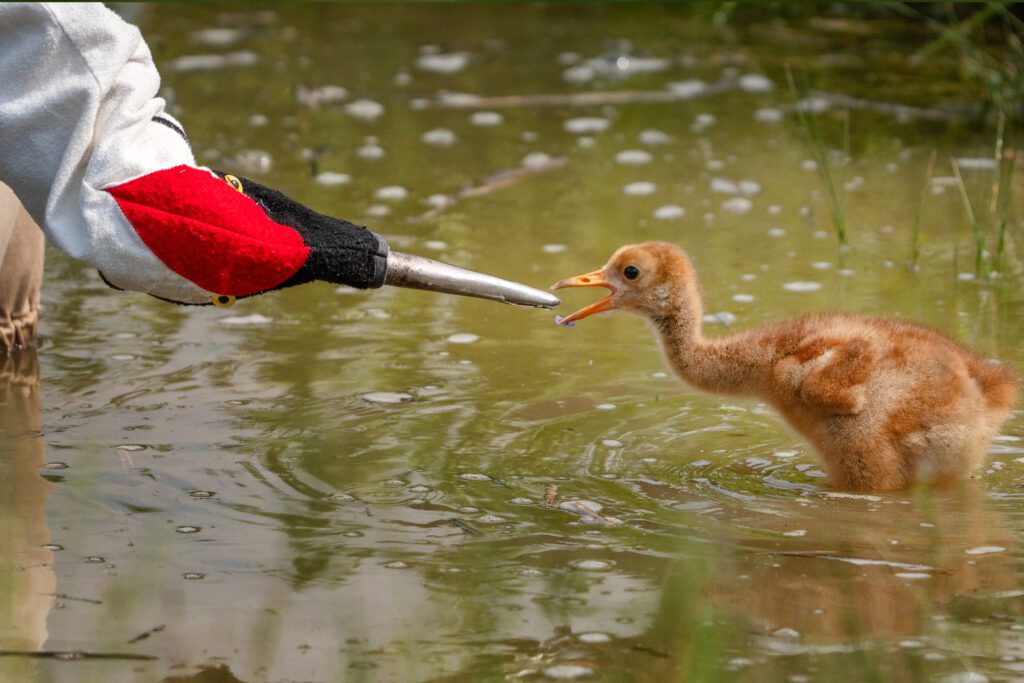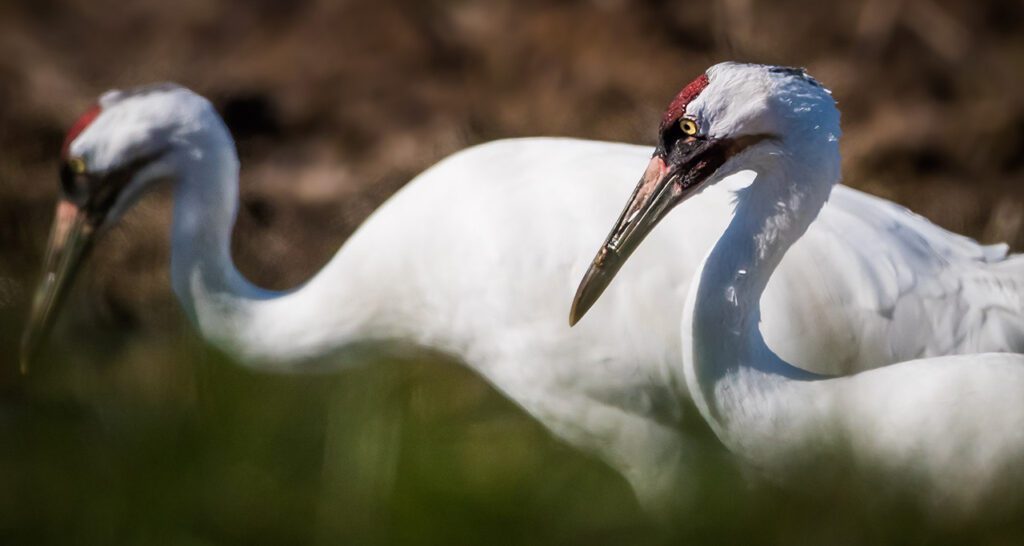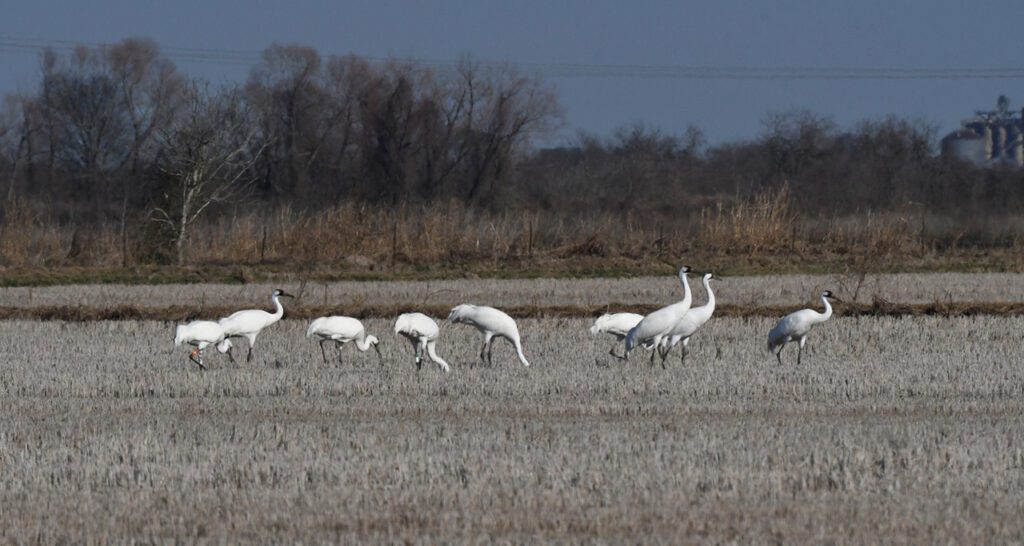Securing Freshwater for Whooping Cranes in Texas
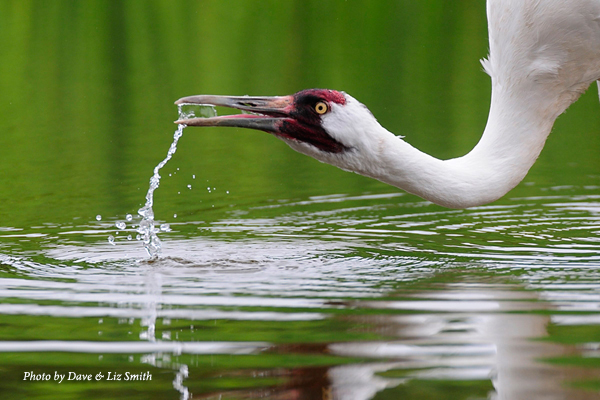
One of the primary research goals of our Texas Program is protecting coastal habitat for wintering Whooping Cranes, which includes the productive salt marshes and tidal flats that fringe the shorelines of the central Texas coast. Protecting these coastal habitats is critical for the species, but cranes, like people, need freshwater to survive. How do we address this need for freshwater as salinities in the bays increase from growing upstream water use and drought?
The Coastal Bend Bays & Estuaries Program, along with our Senior Whooping Crane Scientist, Dr. Liz Smith, and colleagues at the San Antonio Bay Partnership are creating upland freshwater wetlands needed by the cranes for drinking. To start, we created a tool to identify potential locations to either repair old water wells or install new wells in areas that will benefit Whooping Cranes. Our “rules” for this project included identifying areas closest to existing Whooping Crane territories, as well as a wetland that had been excavated to hold water during a drought that would form a natural pond with a continuous water source. Due to our funding source’s requirements, the site also needed to be located on lands privately owned, as well as protected under a conservation easement that would restrict future development.
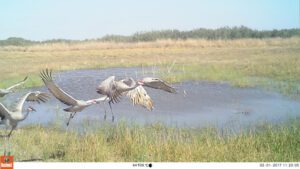
Through this process, we identified three sites and drilled two wells. The pumps for these wells are solar powered. We also worked with landowners to manage the surrounding area by encouraging them to mow and burn vegetation around the resulting ponds, remove invasive species like cattail and feral hogs, and manage livestock access to the ponds. Early in September 2016, water gushed from the new wells and into the ponds. We are now monitoring the use of these wells using game cameras, which have taken thousands of images of wildlife benefiting from the new freshwater ponds. Just as we’d hoped, we’ve documented the consistent use of the ponds by Whooping Cranes. There are quite a few other animals who make use of this habitat too, including lots of herons, Sandhill Cranes, wild hogs, and alligators!

Story submitted by Dr. Liz Smith, Senior Whooping Crane Scientist for the International Crane Foundation. Click here to learn more about our work in North America.
